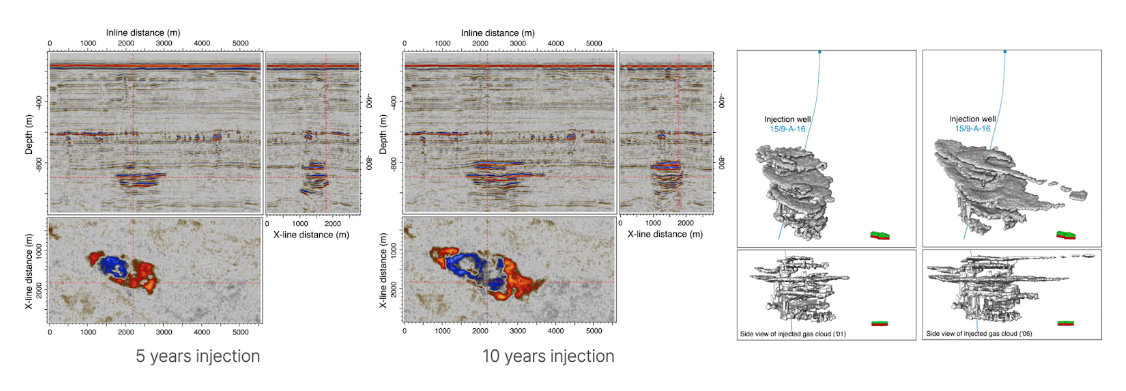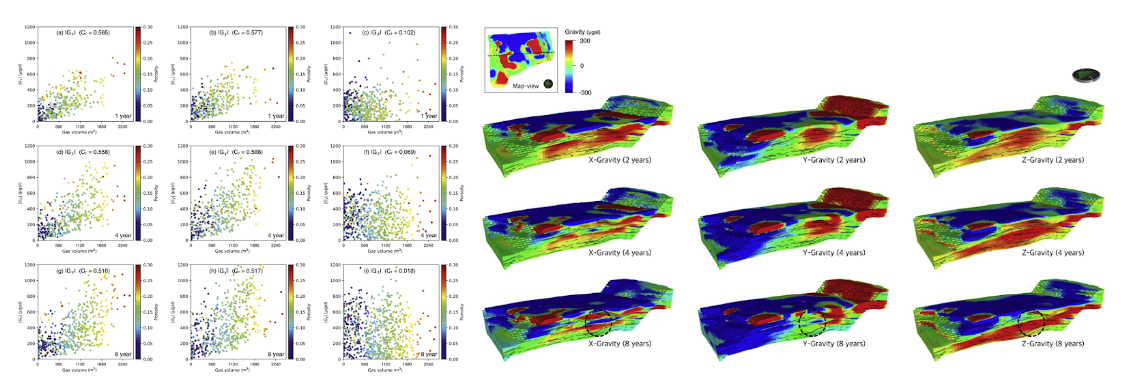-
[CCS storage unit volume estimation]

The goal of this research is to propose a novel workflow to estimate the stored CO2 volume and to quantify the uncertainty of the injected volume. We implemented geophysical stochastic inversion using the time-lapse 3D seismic volumes as inputs, which provides an indirect estimation of the velocity changes and the migration path of the injected gas content. When performing the inversion, we employed the reversible-jump approach and used the Sleipner time-lapse 3D seismic volumes to demonstrate the proposed workflow. The inversion result was validated via forward modeling and pseudo well log interpretation. We then built a structural geology model and populated porosity logs by performing 500 realizations for volumetric analysis. In a comparison of the measured volume of the injected gas via volumetric analysis results, the predicted subsurface CO2 volume linearly increases in the same phase with the injection rate, and the volume estimation error is less than 17%.
-
[Fluid injection monitoring]

Conventional airborne and surface gravity surveys are often conducted for basin-scale density measurements during hydrocarbon exploration to provide information with respect to potential locations of petroleum reservoir fluid, such as oil and gas. Additionally, these gravity measurements are used during the reservoir development stage to monitor fluid propagation in time and space because of density difference within displaced and injected fluids. However, some challenges exist with the direct use of these conventional gravity measurements. First, airborne and surface gravity surveys provide coarse data resolution. Second, the application of these measurements may require a computationally costly solution of an inverse problem because of large matrix mathematical operations to construct a three-dimensional (3D) earth property model. Therefore, a method is proposed that rapidly generates a high resolution time-lapse fluid saturation (or bulk density) model to monitor reservoir fluid propagation in time and space from multicomponent borehole gravity measurements. In this study, equations used to calculate synthetic multicomponent borehole gravity are discussed. Simple kriging was applied to interpolate gravity data between wells for 3D model construction. Further, data from the Hastings Field were used to create a reservoir model and validate the proposed fluid propagation approach. The fluid flow simulation was conducted on the Hastings gas injection reservoir model for ten years, and corresponding multicomponent borehole gravity modeling was performed at yearly intervals. A correlation is demonstrated between interpolated multicomponent gravity data and the distribution of injected gas in time and space.